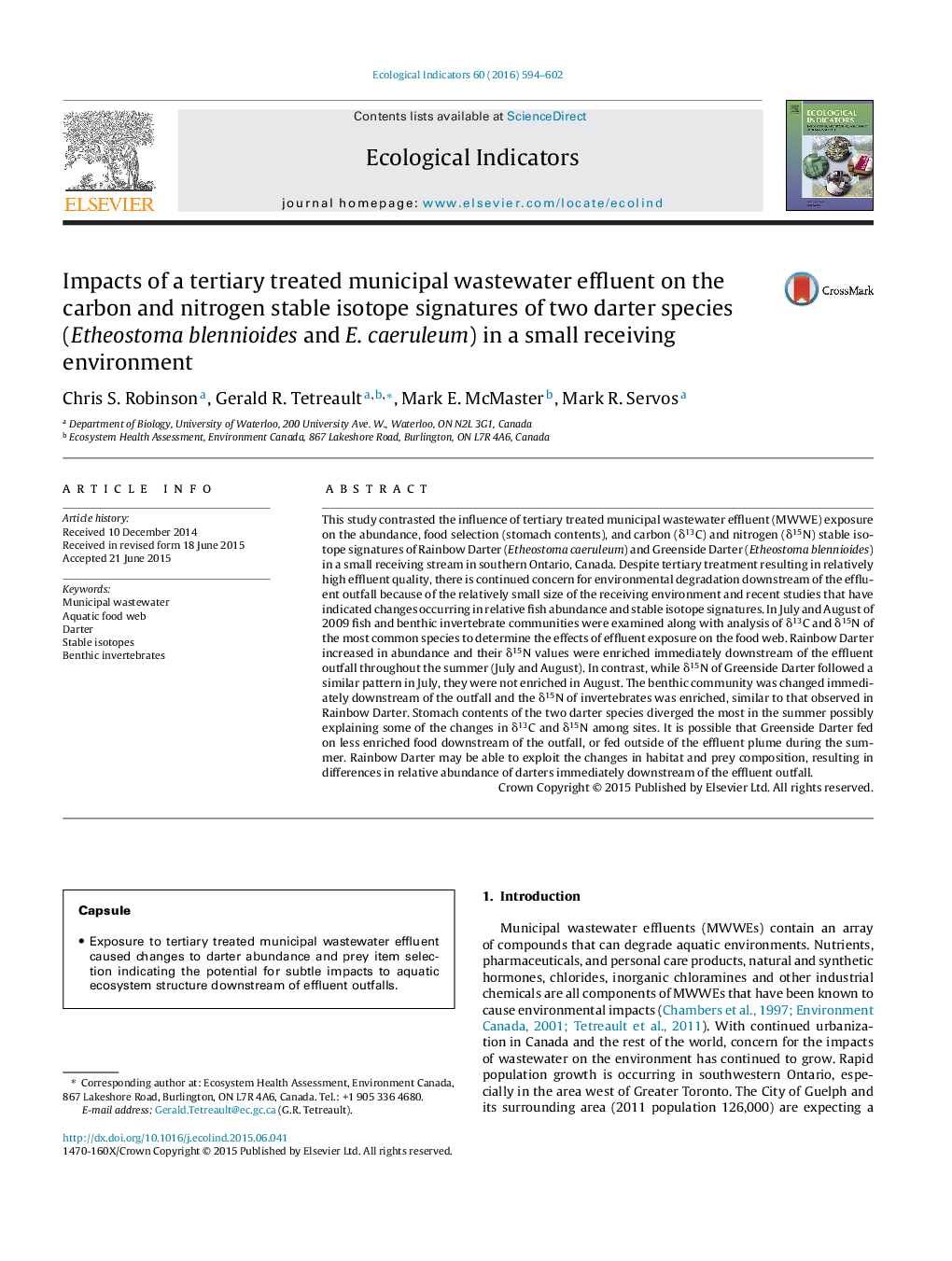| کد مقاله | کد نشریه | سال انتشار | مقاله انگلیسی | نسخه تمام متن |
|---|---|---|---|---|
| 6294113 | 1617141 | 2016 | 9 صفحه PDF | دانلود رایگان |
عنوان انگلیسی مقاله ISI
Impacts of a tertiary treated municipal wastewater effluent on the carbon and nitrogen stable isotope signatures of two darter species (Etheostoma blennioides and E. caeruleum) in a small receiving environment
دانلود مقاله + سفارش ترجمه
دانلود مقاله ISI انگلیسی
رایگان برای ایرانیان
کلمات کلیدی
موضوعات مرتبط
علوم زیستی و بیوفناوری
علوم کشاورزی و بیولوژیک
بوم شناسی، تکامل، رفتار و سامانه شناسی
پیش نمایش صفحه اول مقاله

چکیده انگلیسی
This study contrasted the influence of tertiary treated municipal wastewater effluent (MWWE) exposure on the abundance, food selection (stomach contents), and carbon (δ13C) and nitrogen (δ15N) stable isotope signatures of Rainbow Darter (Etheostoma caeruleum) and Greenside Darter (Etheostoma blennioides) in a small receiving stream in southern Ontario, Canada. Despite tertiary treatment resulting in relatively high effluent quality, there is continued concern for environmental degradation downstream of the effluent outfall because of the relatively small size of the receiving environment and recent studies that have indicated changes occurring in relative fish abundance and stable isotope signatures. In July and August of 2009 fish and benthic invertebrate communities were examined along with analysis of δ13C and δ15N of the most common species to determine the effects of effluent exposure on the food web. Rainbow Darter increased in abundance and their δ15N values were enriched immediately downstream of the effluent outfall throughout the summer (July and August). In contrast, while δ15N of Greenside Darter followed a similar pattern in July, they were not enriched in August. The benthic community was changed immediately downstream of the outfall and the δ15N of invertebrates was enriched, similar to that observed in Rainbow Darter. Stomach contents of the two darter species diverged the most in the summer possibly explaining some of the changes in δ13C and δ15N among sites. It is possible that Greenside Darter fed on less enriched food downstream of the outfall, or fed outside of the effluent plume during the summer. Rainbow Darter may be able to exploit the changes in habitat and prey composition, resulting in differences in relative abundance of darters immediately downstream of the effluent outfall.
ناشر
Database: Elsevier - ScienceDirect (ساینس دایرکت)
Journal: Ecological Indicators - Volume 60, January 2016, Pages 594-602
Journal: Ecological Indicators - Volume 60, January 2016, Pages 594-602
نویسندگان
Chris S. Robinson, Gerald R. Tetreault, Mark E. McMaster, Mark R. Servos,